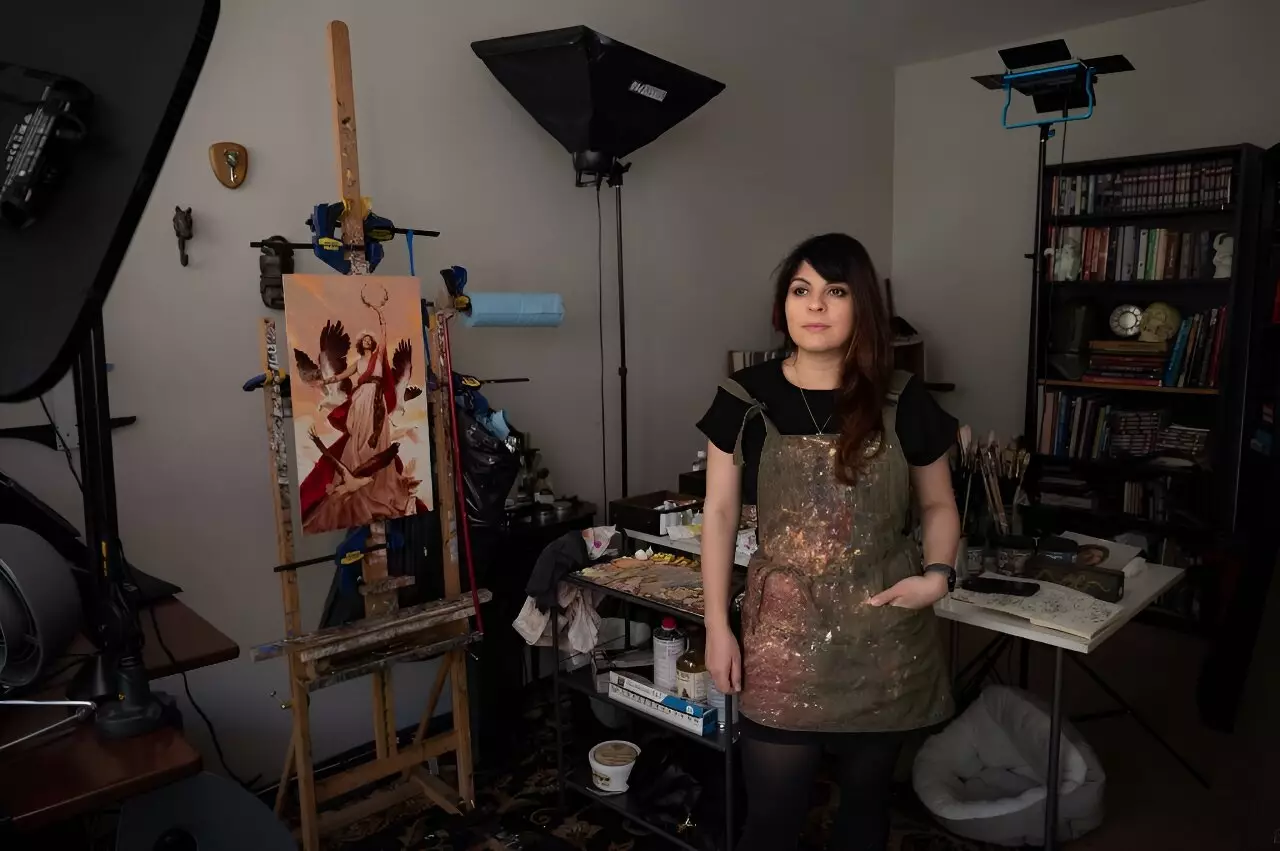Artificial intelligence (AI) has become a rapid proliferator in our digital world. As it evolves and advances, AI methods are now capable of studying an artist’s work and replicating their unique style. This disruptive power has left artists feeling threatened and undervalued, as their creations are copied and distributed without their consent or compensation. However, artists are not standing idly by. They have joined forces with university researchers to develop innovative solutions to combat this copycat activity and protect their creative endeavors.
One artist who found herself in defense mode is Paloma McClain, a talented illustrator from the United States. When she discovered that AI models had been “trained” using her art without acknowledgment or payment, McClain felt greatly disturbed. She firmly believes that technological advancement should be done ethically, benefiting everyone rather than exploiting others. To address this issue, McClain turned to a groundbreaking software called Glaze, created by researchers at the University of Chicago.
Glaze functions as a shield, outsmarting AI models in their training process. By subtly manipulating pixels in ways imperceptible to human viewers, Glaze transforms digital artwork, rendering it vastly different to AI. Professor Ben Zhao, a computer science expert and member of the Glaze team, describes it as a technical tool to safeguard human creators against invasive and abusive AI models. Developed in an impressive four months, Glaze builds upon technology already used to disrupt facial recognition systems, highlighting the urgency of defending artists from these digital imitators.
While some generative AI giants have agreements to use data for training, the majority of digital content, such as images, audio, and text, has been scraped from the internet without explicit consent. This alarming practice has prompted an outcry from artists seeking protection for their intellectual property. Since its release in March 2023, Glaze has been downloaded over 1.6 million times, demonstrating the significant demand for this type of defense. Moreover, Zhao’s team is currently working on enhancing Glaze with a feature named Nightshade, which further confuses AI models. For example, Nightshade tricks AI into interpreting a dog as a cat, introducing a new level of disruption. McClain believes that Nightshade, when widely adopted by artists who disseminate “poisoned images” online, will create a noticeable impact in fending off AI replication.
Recognizing the need to fortify defenses against AI infringement, other initiatives have surfaced. Startup Spawning has developed Kudurru software, which detects attempts to harvest a large number of images from online platforms. This enables artists to block access or send manipulated images that contaminate the dataset used to train AI models. More than a thousand websites have already integrated into the Kudurru network, demonstrating the broad reach and impact of this defensive tool. Additionally, Spawning has launched haveibeentrained.com, a website offering an online tool for artists to verify whether their work has been fed into AI models without consent and opt-out of future usage.
Meanwhile, researchers at Washington University in Missouri have focused on countering AI voice replication. Their innovation, called AntiFake, enriches digital recordings by introducing inaudible noise that makes it “impossible to synthesize a human voice.” This technology not only prevents unauthorized AI training but also inhibits the creation of “deepfakes” – manipulated audio or video content that falsely portrays individuals. The AntiFake software, currently utilized for recording human speech, has the potential to expand its application to different domains, such as music.
The battle to protect artists from AI infringement is far from over. However, these emerging technologies and initiatives represent a determined effort to shift the balance in favor of creators. Jordan Meyer, the co-founder of Spawning, expressed the belief that the optimal solution would be a world in which all AI data is acquired through consent and paid usage. While this aspiration may still seem distant, the collaborative efforts of artists and researchers are undoubtedly making substantial strides towards greater respect for artistic works and the protection of intellectual property.
In this rapidly evolving digital landscape, the struggle to protect artistic creations from AI replication continues. Artists exemplify resilience and creativity not only in their works but also in their battle against AI infringement. With continuous advancements in software and the unwavering determination of creators and researchers, the future holds the promise of a more secure and equitable environment for artists to thrive.


Leave a Reply